 Peter Legrand in the Gramophone Records Museum's exhibition hall (2004)
Ghanaian music album sleeves
Peter Legrand in the Gramophone Records Museum's exhibition hall (2004)
Ghanaian music album sleeves
 |  |  |  |
| Gapophone Records | Jim Rolling & Joe Amanquah | Anonymous | Anonymous |
The Gramophone Records Museum and Research Centre of Ghana recognizes music album sleeves in Ghana as art. Many talented Ghanaian graphic artists contributed to the popularity of highlife sound both locally and abroad.
The music on the shellac discs from the 1920's were recorded by European companies such as Zonophone, Decca, His Master's Voice, Senafone, Queenophone, Opika and Philips. The album sleeves at that time were presented in blank brown paper jackets depicting only the label of the recording company. Attractive communicative music album designs were therefore needed to complement the feelings of these times of modernity as against those music album sleeves of the earlier years.
Between the 1950's and 1970's, the drab brown jackets begun to see colour. Illustrations, photographs and graphic art appeared in addition to the labels. Originally the artists who were commissioned to do the drawings and paintings or take photographs for the jacket covers or to design them were self-trained artists or sign writers. They acquired their skills through self-training by copying portrait examples from textbooks, illustrations, photographs, foreign magazines and local newspapers. From this point they later learnt to draw by imagination. However many of the drawings and paintings they did was not controlled by strict duplication of the exactness of nature.
These artists often sought to express the idea important to them in an object and not the photographic image of the object itself. This objectivity offered the Ghanaian artist more dynamism and versatility in his art. He could therefore express in the abstract, realistic or naturalistic styles.
The exhibition Ghanaian Album Covers as Art
The ongoing exhibition
Ghanaian Album Covers as Art (2004-) presents the work of Ghanaian artists who created album covers from the 1960’s to the 1980’s. The visual impact of their design combined with the music of well known performers has given many album sleeves a status of icon.
The Ghanaian album designers used photography, graphic design and typography to show a recording artist’s persona or to represent social interests, moral messages and aesthetic values adopted by the artists and the public in general. The front covers of the albums were designed to satisfy the local consumers and used as a primary marketing tool by recording companies.
1. Illustrators
In the 1960’s, illustrations depict the content of highlife songs which are concerned with everyday life, male-female relationships, popular beliefs, religious convictions, folk tales or traditional saying. During the second half of the 1960’s and early 1970’s illustration became the dominant fashion in album sleeves released by the major recording companies. Guy Hayford Agameti is an artist painter based in Kumasi. His designs illustrate songs drawn from concert party performances or choir music:
 |  |  |  |
| Guy Hayford Agameti | Guy Hayford Agameti | Guy Hayford Agameti | Guy Hayford Agameti |
2. Calligraphy
The tradition of illustration issued from the 1950’s is continued in the 1960’s while adding an inventive use of typography. The utilitarian lettering used to identify an album evolved to a more adventurous design and typography.
 |  |  |  |
| Anonymous | Anonymous | Anonymous | Ebo Prah |
 |  |  |  |
| M. Bampoe | Ebele & Chynie | Meridian Art Services | Osansa |
Ebele & Chynie are also known for the design of the album jacket of Fela Ransome Kuti and his Africa 70, titled “Fela Fela Fela” produced by EMI Nigeria, 1969.
3. E.E. Lamptey
Lamptey’ skill in photography and his inventive designs were very successful and his name can be found on hundreds of album sleeves. His portraits of musicians are intended to enhance the identity of the artists, hence suggesting in a “snap shot” the character of the music recorded on the albums:
 |  |  |  |
| E.E. Lamptey | E.E. Lamptey | E.E. Lamptey | E.E. Lamptey |
 | ![K. Frimpong and his Cubano Fiestas [Self Titled] (1977) K. Frimpong and his Cubano Fiestas [Self Titled] (1977)](../../../media/publications/Highlife/albums/043-K-Frimpong-s.jpg) |  |  |
| E.E. Lamptey | E.E. Lamptey | E.E. Lamptey | E.E. Lamptey |
4. Mantsefio Bampoe (and photographers Gerald Annan-Forson and Fred Attoh)
Art designer Mantsefio Bampoe has worked in collaboration with many outstanding photographers. The exceptional quality of his artwork is demonstrated on albums produced by artists such as the Sweet Talk, the Exciting Talkative, Wulomei and many others - which present good examples of “branding”, a strategy that ensures a visual continuity from one album sleeve to the next.
Gerald L. Annan-Forson is an independent photographer born in London in 1947. He studies photography by correspondence course and, later goes to California to study criminology and civil engineering. Returning to Ghana in 1976, he worked as a freelance photographer and taught photography at the National Film and Television Institute. He currently lectures in Photojournalism at the Ghana Institute of Journalism. (www.sudplanete.net)
Fred Attoh is a Ghanaian photographer and author of a book entitled Clay figures used in funeral ceremonies, published by Ghana Museum and Monument Board in 1970.
 |  |  |  |
| Mantsefio Bampoe | Mantsefio Bampoe | Mantsefio Bampoe | Mantsefio Bampoe |
 |  |  |  |
| G. Annan-Forson | G. Annan-Forson | Fred Attoh | Fred Attoh & Nana Bosompra |
5. Willis E. Bell, photographer
Willis Bell was born in India in 1923. In 1956, he came to Ghana to work on a film project on the Ashanti war. He never left the country and died in Ghana in 1999. Willis Bell was one of the great official photographers during Independence in Ghana. In 1972, he took part in setting up the first Ghanaian publishing house, African Publications. “My work entails showing the spirit of the times through my photography.”
The African Brothers’ album design was the work of Saka Acquaye in collaboration with photographer Willis Bell. A painter, sculptor, textile designer and musician, Saka Acquaye was born in Accra in 1923. He studied art, music and craft at Achimota Art School and studied in the USA in Philadelphia and Los Angeles in the 1950’s. He died in Accra on February 27th, 2007. (www.modernghana.com)
 |  |  |  |
| Willis E. Bell | Willis E. Bell | Willis E. Bell & Saka Acquaye | Willis E. Bell & J.K. Taylor |
6. Ghanaian Designers
 |  |  |  |
| Mike Owusu-Siaw | Mike Owusu-Siaw | Kobina Smith | Dan A. Opoku |
![Ebo Taylor and the Pelikans, [Self Titled] (ca 1970) Ebo Taylor and the Pelikans, [Self Titled] (ca 1970)](../../../media/publications/Highlife/albums/089-Ebo-Taylor-s.jpg) |  |  |  |
| Kofi Lindsay | Kwasi Kwarteng | Nana Poku | Slim Bentil & Edinam Kudowor |
 |  |  |  |
| Beeb King | Gerhard Adu | Mensah-Boamah Associate | B.B. Ossei & Eddie Donnor |
 |  |  |  |
| Studio X 23 | Pix | Biodun Sowunmi | Biodun Sowunmi |
 | ![Ebo Taylor, [Self-titled] (1977) Ebo Taylor, [Self-titled] (1977)](../../../media/publications/Highlife/albums/115-Ebo-Talor-s.jpg) |  |  |
| Deikor Gbedemah | Gerhard Adu | R.E.N.Y. | S.Y.O. Safo |
 |  |  |  |
| Big Jerry | Big Jerry | Big Jerry | Big Jerry |
Samuel K. Buabin’s album cover designs use typography, cartoon style of drawing, illustrations and a mixture of all these techniques. The title of the album Black Satin refers to an album recorded by jazz musician Miles Davis in New York in 1972:
 |  | ![Black Satin, [Self-titled] (ca 1976) Black Satin, [Self-titled] (ca 1976)](../../../media/publications/Highlife/albums/125-Black-Satin-s.jpg) |  |
| Samuel Buabin | Samuel Buabin | Samuel Buabin | Samuel Buabin |
 |  |  |  |
| Augustus Taylor | Augustus Taylor | Augustus Taylor | Augustus Taylor |
 |  |  |  |
| Augustus Taylor | K. Setordji & K. Frimpong | K. Setordji & K. Frimpong | K. Setordji & K. Frimpong |
The artist Kofi Setordji and the photographer K Frimpong worked as a team on many album cover designs. Born in 1957, Kofi Setordji is established in Accra where he spent some time working with Ghanaian sculptor and folklorist Saka Acquaye in the late 1980’s. Setordji is the founder of an “Art Haus” in Accra. (Ghana, Yesterday and Today, Editions Dapper, 2003)

Ebo Taylor, Aba Yaa, Kwabena Afadzie, Wongyae Me Mu (ca 1976)
Designer: Gapophone Records
Courtesy of the Gramophone Records Museum and Research Centre of Ghana
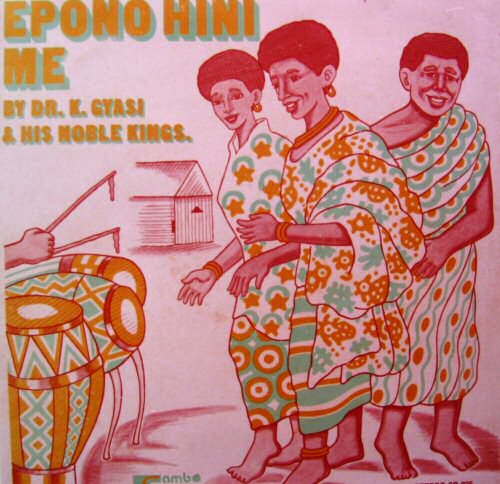
Dr. K. Gyasi and his Noble Kings, Epono Hini Me (ca 1978)
Design: Jim Rolling & Joe Amanquah
Courtesy of the Gramophone Records Museum and Research Centre of Ghana

Akwaboa's International Band, Fidie Wura (ca 1978)
Design: Anonymous
Courtesy of the Gramophone Records Museum and Research Centre of Ghana

Dzadzeloi, Two Paddy Follow One Girl (1975)
Design: Anonymous
Courtesy of the Gramophone Records Museum and Research Centre of Ghana

Kakaiku's Guitar Band, Adadam Paa Nie (ca 1973)
Design: Guy Hayford Agameti
Courtesy of the Gramophone Records Museum and Research Centre of Ghana

K.K.'s No. 2 (Executive) Band (ca 1968)
Design: Guy Hayford Agameti
Courtesy of the Gramophone Records Museum and Research Centre of Ghana

J.B. Boatey, Mema Mani So Makyere Mmepo (ca 1970)
Design: Guy Hayford Agameti
Courtesy of the Gramophone Records Museum and Research Centre of Ghana

Kakaiku's No. 2 Band, Akyinkyin Akyinkyin (ca 1969)
Design: Guy Hayford Agameti
Courtesy of the Gramophone Records Museum and Research Centre of Ghana

Dzadzeloi, Napoliata (1978)
Design: Anonymous
Courtesy of the Gramophone Records Museum and Research Centre of Ghana

Ogyatanaa, Obra Muasem (1978)
Design: Anonymous
Courtesy of the Gramophone Records Museum and Research Centre of Ghana
![Professional Uhuru Dance Band, [Self-titled], (ca 1971) Professional Uhuru Dance Band, [Self-titled], (ca 1971)](../../media/publications/Highlife/albums/021-Uhuru.jpg)
Professional Uhuru Dance Band, [Self-titled], (ca 1971)
Design: Anonymous
Courtesy of the Gramophone Records Museum and Research Centre of Ghana

Sweet Talks, Party Time in Hollywood (1978)
Design: Ebo Prah
Courtesy of the Gramophone Records Museum and Research Centre of Ghana

Ebo Taylor with Wuta Wazutu, Gotta take it cool (1978)
Design: Mantsefio Bampoe
Courtesy of the Gramophone Records Museum and Research Centre of Ghana
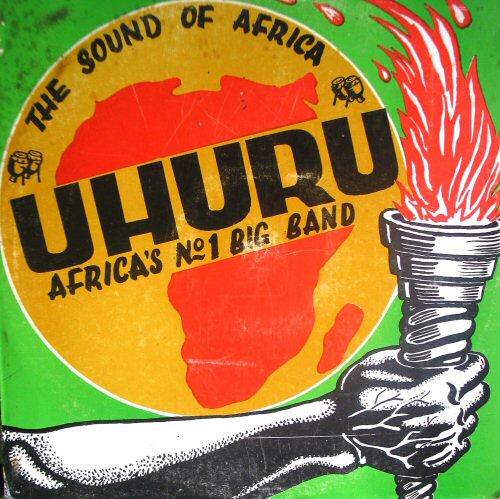
Uhuru Dance Band, The Sound of Africa (1975)
Design: Ebele & Chynie
Courtesy of the Gramophone Records Museum and Research Centre of Ghana

The Jewel, Sow in Tears & Reap in Joy (1978)
Design: Meridian Art Services
Courtesy of the Gramophone Records Museum and Research Centre of Ghana

Osansa, Obra Yi (ca 1970)
Design: Osansa
Courtesy of the Gramophone Records Museum and Research Centre of Ghana

Vis a Vis, Top Hits (ca 1976)
Design: E.E. Lamptey
Courtesy of the Gramophone Records Museum and Research Centre of Ghana

Kumapim Royal Band, Girl Bi Nti (1980)
Design: E.E. Lamptey
Courtesy of the Gramophone Records Museum and Research Centre of Ghana

The Powerful Believers, Time for Highlife (1978)
Design: E.E. Lamptey
Courtesy of the Gramophone Records Museum and Research Centre of Ghana

The Powerful Believers, Mena Owu (1978)
Design: E.E. Lamptey
Courtesy of the Gramophone Records Museum and Research Centre of Ghana

Kumapim Royals International Band, Pe Me Seyee (1983)
Design: E.E. Lamptey
Courtesy of the Gramophone Records Museum and Research Centre of Ghana
![K. Frimpong and his Cubano Fiestas, [Self-titled] (1977) K. Frimpong and his Cubano Fiestas, [Self-titled] (1977)](../../media/publications/Highlife/albums/043-K-Frimpong.jpg)
K. Frimpong and his Cubano Fiestas, [Self-titled] (1977)
Design: E.E. Lamptey
Courtesy of the Gramophone Records Museum and Research Centre of Ghana

Happy Stars, Adwendwen Na Ema Menom Nsa (ca 1978).
Design: E.E. Lamptey; The record title means "it is daily worries that make me drink alcohol"
Courtesy of the Gramophone Records Museum and Research Centre of Ghana

Brigadier Super O.D., Woye Me Bone A Metu Wo Wig (ca 1978)
Design: E.E. Lamptey
Courtesy of the Gramophone Records Museum and Research Centre of Ghana

Sweet Talks, Adam & Eve (1975)
Design: Mantsefio Bampoe
Courtesy of the Gramophone Records Museum and Research Centre of Ghana

Sweet Talks, Mbesiafo Nto Nsa (1976)
Design: Mantsefio Bampoe
Courtesy of the Gramophone Records Museum and Research Centre of Ghana

Sweet Talks, Spiritual Ghana (1976)
Design: Mantsefio Bampoe
Courtesy of the Gramophone Records Museum and Research Centre of Ghana
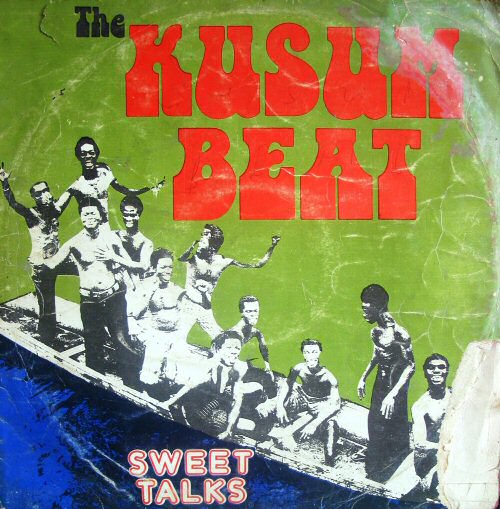
Sweet Talks, The Kusum Beat (1976)
Design: Mantsefio Bampoe
Courtesy of the Gramophone Records Museum and Research Centre of Ghana

Teacher and his Africana, Odo Gyae (1977)
Photographer: G. Annan-Forson
Courtesy of the Gramophone Records Museum and Research Centre of Ghana

The Exciting Talkatives, Peace & Love (1977)
Photographer: G. Annan-Forson
Courtesy of the Gramophone Records Museum and Research Centre of Ghana

Ashiedu Keteke, Gbo Ofo Mino (1978)
Photographer: Fred Attoh
Courtesy of the Gramophone Records Museum and Research Centre of Ghana

African Brothers Band (International), Tribute to D.K. (1979)
Photographer: Fred Attoh. Design: Nana Bosompra
Courtesy of the Gramophone Records Museum and Research Centre of Ghana

Ashanti Brothers Band, Wo Yonko Da Ne Wo Da (1976)
Photographer: Willis E. Bell
Courtesy of the Gramophone Records Museum and Research Centre of Ghana

Andy Vans, Come Closer (1975)
Photographer: Willis E. Bell
Courtesy of the Gramophone Records Museum and Research Centre of Ghana

African Brothers International, Obiara Wo Nea Otumi No (1978)
Photographer: Willis E. Bell. Design: Saka Acquaye
Courtesy of the Gramophone Records Museum and Research Centre of Ghana

Ashanti Brothers Band, Kill Me and Fly (1978)
Photographe : Willis E. Bell. Design: J.K. Taylor
Courtesy of the Gramophone Records Museum and Research Centre of Ghana
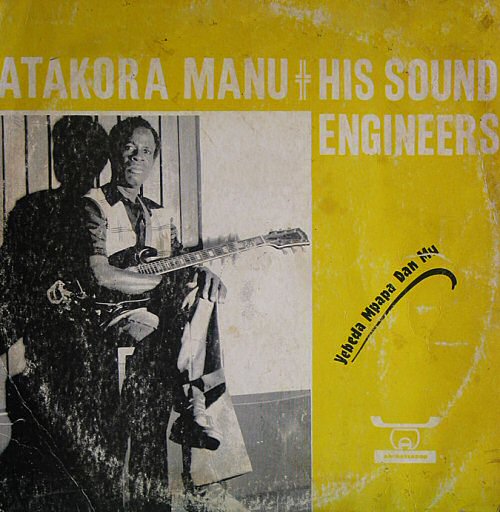
Atakora Manu & His Sound Engineers, Yebeda Mpapa Dan Mu (1973)
Design: Mike Owusu-Siaw
Courtesy of the Gramophone Records Museum and Research Centre of Ghana

A.B. Crentsil and the Super Sweet Talks (International), Mewo Road (1979)
Design: Mike Owusu-Siaw
Courtesy of the Gramophone Records Museum and Research Centre of Ghana

City Boys Band (led by Obuoba J.A. Adofo), Georgina (ca 1977)
Design: Kobina Smith
Courtesy of the Gramophone Records Museum and Research Centre of Ghana

Yamoah's Special, Volume 1 (ca 1970)
Design: Dan A. Opoku
Courtesy of the Gramophone Records Museum and Research Centre of Ghana
![Ebo Taylor and the Pelikans, [Self-titled] (ca 1970) Ebo Taylor and the Pelikans, [Self-titled] (ca 1970)](../../media/publications/Highlife/albums/089-Ebo-Taylor.jpg)
Ebo Taylor and the Pelikans, [Self-titled] (ca 1970)
Design: Kofi Lindsay
Courtesy of the Gramophone Records Museum and Research Centre of Ghana

Tomi D., The World Changes (ca 1975)
Design: Kwasi Kwarteng
Courtesy of the Gramophone Records Museum and Research Centre of Ghana

Dan Boadi and the African Internationals, Money is the Root of Evil (1978)
Design: Nana Poku
Courtesy of the Gramophone Records Museum and Research Centre of Ghana

Pepper Onion Ginger Salt, Bubuashie (1985)
Design: Slim Bentil & Edinam Kudowor
Courtesy of the Gramophone Records Museum and Research Centre of Ghana

Alex Konadu, Odo Meko Ama Obiaba (ca 1977)
Design: Beeb King
Courtesy of the Gramophone Records Museum and Research Centre of Ghana

K.K. Masters Band led by E.A. Kwame Kwafo (1977)
Design: Gerhard Adu
Courtesy of the Gramophone Records Museum and Research Centre of Ghana

Dr. K. Gyasi Noble Kings, African High Life Beat Goes Sky-High-U.S.A. (ca 1978)
Design: Mensah-Boamah Associate
Courtesy of the Gramophone Records Museum and Research Centre of Ghana

Dr. K. Gyasi presents B.B. Ossei with the Noble Kings Dance Band, Yako Aba (ca 1975)
Design: B.B. Ossei & Eddie Donnor
Courtesy of the Gramophone Records Museum and Research Centre of Ghana

E.K. Nyame, This Is E.K.'s Band No.1 (1973)
Design: Studio X 23
Courtesy of the Gramophone Records Museum and Research Centre of Ghana
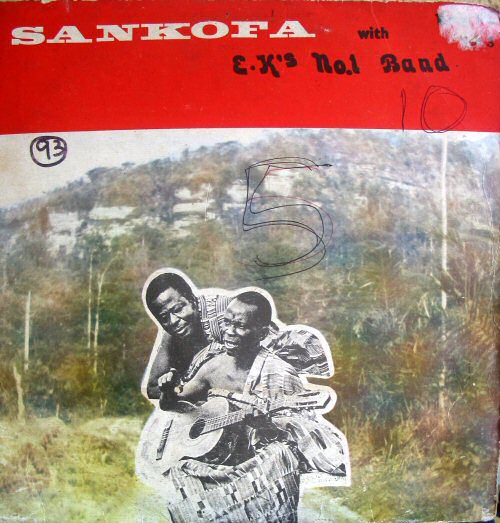
Sankofa with E.K.'s Band No.1, Sankofa Volume 4 (ca 1977)
Design: Pix
Courtesy of the Gramophone Records Museum and Research Centre of Ghana

The Ramblers Dance Band, The Hit Sound of (1968)
Design: Biodun Sowunmi
Courtesy of the Gramophone Records Museum and Research Centre of Ghana

Trans Africa Show Band (led by Elgran Koffie), The African Syndrome (1981)
Design: Biodun Sowunmi
Courtesy of the Gramophone Records Museum and Research Centre of Ghana

Kwamena Ray Ellis, Keyboard Africa, Higlife'n'Piano (ca 1973)
Design: Deikor Gbedemah
Courtesy of the Gramophone Records Museum and Research Centre of Ghana
![Ebo Taylor, [Self-titled] (1977) Ebo Taylor, [Self-titled] (1977)](../../media/publications/Highlife/albums/115-Ebo-Talor.jpg)
Ebo Taylor, [Self-titled] (1977)
Design: Gerhard Adu
Courtesy of the Gramophone Records Museum and Research Centre of Ghana

Rim Akandoh And His Prince Sparrows Band, Adee Akye Abia (1978)
Design: R.E.N.Y.
Courtesy of the Gramophone Records Museum and Research Centre of Ghana
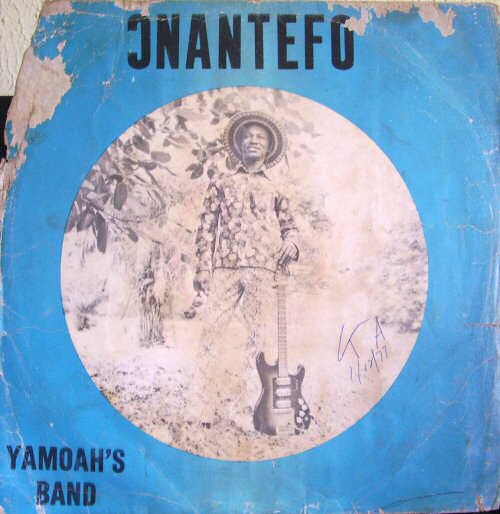
Yamoah's Band, Onantefo (ca 1975)
Design: S.Y.O. Safo
Courtesy of the Gramophone Records Museum and Research Centre of Ghana

Katakumbey led by Ekow Redding, Ye Aba Bio (ca 1974)
Design: Samuel Buabin
Courtesy of the Gramophone Records Museum and Research Centre of Ghana

Dr. K. Gyasi & His Noble Kings, The Creation (1975)
Design: Samuel Buabin
Courtesy of the Gramophone Records Museum and Research Centre of Ghana
![Black Satin, [Self-titled] (ca 1976) Black Satin, [Self-titled] (ca 1976)](../../media/publications/Highlife/albums/125-Black-Satin.jpg)
Black Satin, [Self-titled] (ca 1976)
Design: Samuel Buabin
Courtesy of the Gramophone Records Museum and Research Centre of Ghana

C.K. Mann, Big Band (1976)
Design: Samuel Buabin
Courtesy of the Gramophone Records Museum and Research Centre of Ghana

K.K.'s No. 2 Band, Heavy Mama (1979)
Design: Big Jerry
Courtesy of the Gramophone Records Museum and Research Centre of Ghana

Bob Pinodo, Sonobete (1979)
Design: Big Jerry
Courtesy of the Gramophone Records Museum and Research Centre of Ghana

C.K. Mann & The Masters, Womma Yengor (1979)
Design: Big Jerry
Courtesy of the Gramophone Records Museum and Research Centre of Ghana

K.K.'s Band, Onipa Nye (1979)
Design: Big Jerry
Courtesy of the Gramophone Records Museum and Research Centre of Ghana

Official Town Presbyterian Singing Band, Obra Akwantu (ca 1975)
Design: Augustus Taylor
Courtesy of the Gramophone Records Museum and Research Centre of Ghana

Pat Thomas and the Sweet Beans, False Lover (1974)
Design: Augustus Taylor
Courtesy of the Gramophone Records Museum and Research Centre of Ghana

Sam Derchie and the Juicy People, Peace of Mind (ca 1975)
Design: Augustus Taylor
Courtesy of the Gramophone Records Museum and Research Centre of Ghana

Kofi 'Papa' Yankson, Osode In Perspective (ca 1975)
Design: Augustus Taylor
Courtesy of the Gramophone Records Museum and Research Centre of Ghana

African Brothers Band International, Have African Feeling (ca 1975)
Design: Augustus Taylor
Courtesy of the Gramophone Records Museum and Research Centre of Ghana

Bob Pinodo, Show Master Of Africa (1978)
Design: K. Setordji & K. Frimpong
Courtesy of the Gramophone Records Museum and Research Centre of Ghana

C.K. Mann & Kofi 'Papa' Yankson, Ko Ma Monko (1978)
Design: K. Setordji & K. Frimpong
Courtesy of the Gramophone Records Museum and Research Centre of Ghana
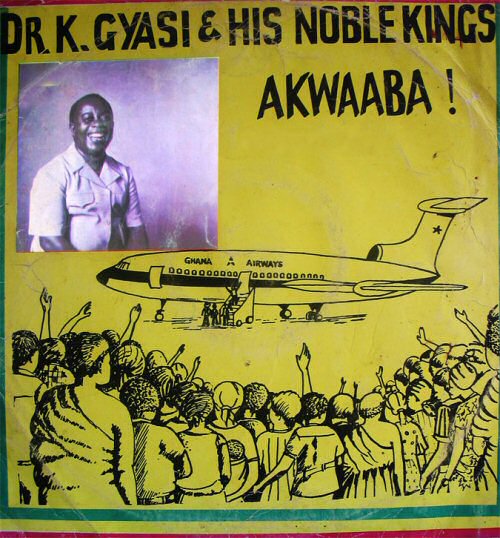
Dr. K. Gyasi & His Noble Kings, Akwaaba! (1977)
Design: K. Setordji & K. Frimpong
Courtesy of the Gramophone Records Museum and Research Centre of Ghana























![K. Frimpong and his Cubano Fiestas [Self Titled] (1977) K. Frimpong and his Cubano Fiestas [Self Titled] (1977)](../../../media/publications/Highlife/albums/043-K-Frimpong-s.jpg)


















![Ebo Taylor and the Pelikans, [Self Titled] (ca 1970) Ebo Taylor and the Pelikans, [Self Titled] (ca 1970)](../../../media/publications/Highlife/albums/089-Ebo-Taylor-s.jpg)












![Ebo Taylor, [Self-titled] (1977) Ebo Taylor, [Self-titled] (1977)](../../../media/publications/Highlife/albums/115-Ebo-Talor-s.jpg)








![Black Satin, [Self-titled] (ca 1976) Black Satin, [Self-titled] (ca 1976)](../../../media/publications/Highlife/albums/125-Black-Satin-s.jpg)









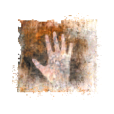











![Professional Uhuru Dance Band, [Self-titled], (ca 1971) Professional Uhuru Dance Band, [Self-titled], (ca 1971)](../../media/publications/Highlife/albums/021-Uhuru.jpg)










![K. Frimpong and his Cubano Fiestas, [Self-titled] (1977) K. Frimpong and his Cubano Fiestas, [Self-titled] (1977)](../../media/publications/Highlife/albums/043-K-Frimpong.jpg)


















![Ebo Taylor and the Pelikans, [Self-titled] (ca 1970) Ebo Taylor and the Pelikans, [Self-titled] (ca 1970)](../../media/publications/Highlife/albums/089-Ebo-Taylor.jpg)












![Ebo Taylor, [Self-titled] (1977) Ebo Taylor, [Self-titled] (1977)](../../media/publications/Highlife/albums/115-Ebo-Talor.jpg)




![Black Satin, [Self-titled] (ca 1976) Black Satin, [Self-titled] (ca 1976)](../../media/publications/Highlife/albums/125-Black-Satin.jpg)












